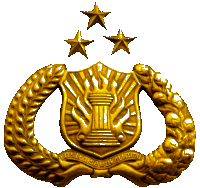Some may wonder why public relations is a deserving topic for the extensive analysis it receives in this encyclopedia. After all, many might think, it is ?just PR.? In the view of some or even many, public relations is the art of sham, spin, buzz, sandbagging, and ?being nice.? Others fear it as deep-pockets lobbying that gives privilege to powerful companies and special interests. Having said that, some critics and many in the general public might be satisfied. They may take a dismissive attitude. That attitude, however, can be counterproductive. Public relations does not slink into the corner because it is dismissed. It is there to be seen and to exert influence. Thus, engaged and thoughtful analysis of the profession may be required before a final opinion is formed on the ethics and societal role of the practice. Otherwise, critics and students of public relations may make a couple of serious mistakes. First, a dismissive attitude toward public relations often is based on a narrow and considerably naïve sense of what public relations is and what practitioners do. This sort of flippant dismissal can lead one to miss the darker side of the practice, which indeed adds evidence to support many of those claims. However, such dismissal causes one to avoid considering the reality that when mispracticed, public relations can divert attention from the real issue, giving a false sense of how popular and favorable a product might actually be. Endless public relations efforts exist, some heavily masked or even dismissed by the half-sibling of public relations, marketing. Thus, when we watch the Super Bowl or the Academy Awards (or any of the endless list of similarly high-profile events), we may fail to recognize the hand of public relations being played. Publicity and promotion are the often silent tools of public relations: some will argue that the best public relations is that which is not recognized as such. The second mistake is failure to understand that public relations also plays a large role in public policy issue debates. In fact, during the 1970s, when the term issues management was coined, that aspect of the practice was started in large part by advertisers who believed that issue advertising could combat the critics of large business activities. This was not a new era in public policy debates. Many senior practitioners had a long reputation of working in the public policy arena. Many believe that the enormous, society-defining debates in the last decades of the 19th century spawned much of the practice as we know it today. But practitioners quickly realized that issue advertising had limited likelihood of appeal and impact as a means of narrowing the chasm between corporate performance and public expectations. In such debates, members of various segments of the general public and opinion leaders may be more interested in the arguments made in a well-crafted editorial or book by an expert?or a feature article?than an advertisement. Thus, the work of the public relations practitioner came to the fore?once again.


